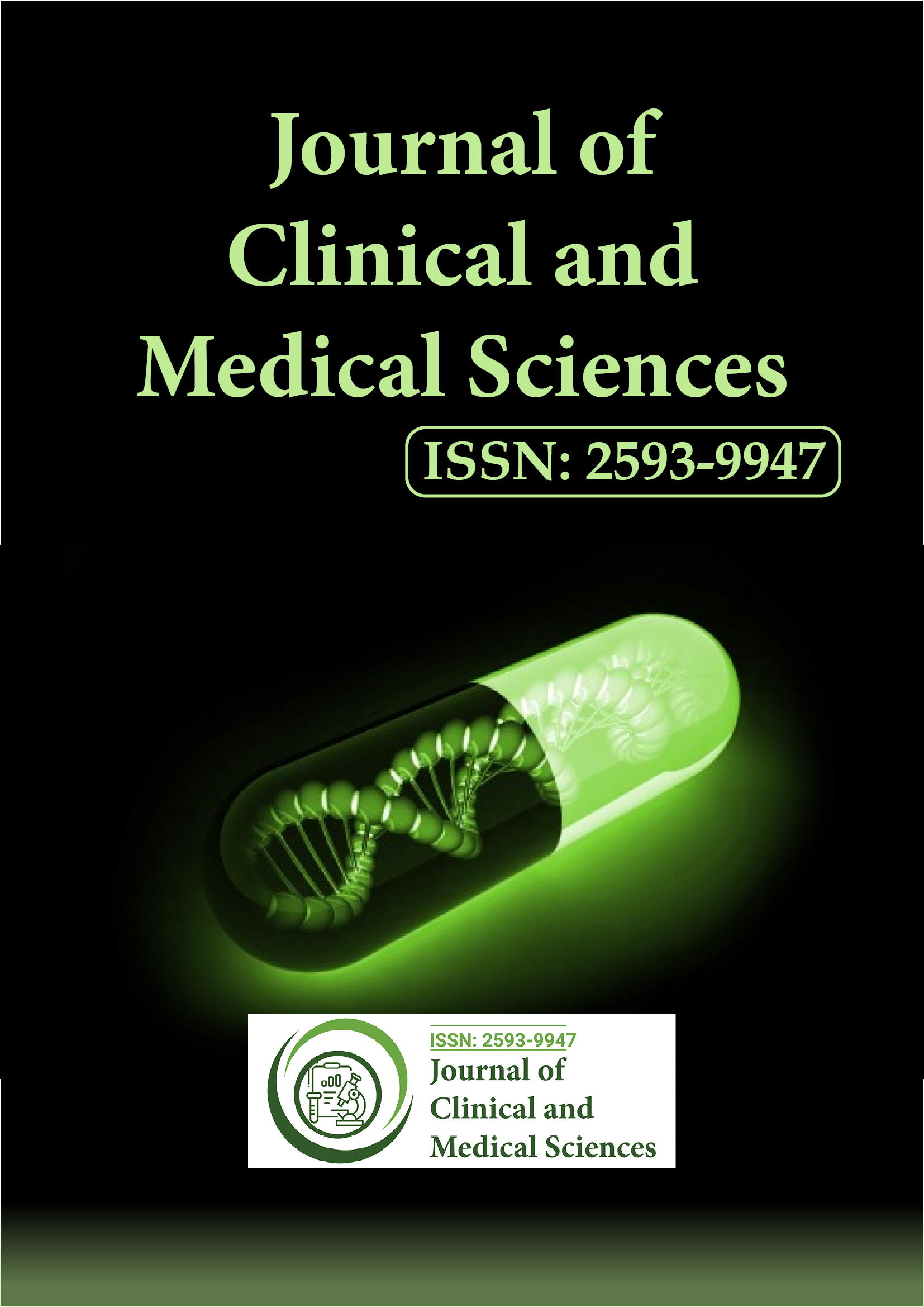Indexed In
- Euro Pub
- Google Scholar
Useful Links
Share This Page
Journal Flyer

Open Access Journals
- Agri and Aquaculture
- Biochemistry
- Bioinformatics & Systems Biology
- Business & Management
- Chemistry
- Clinical Sciences
- Engineering
- Food & Nutrition
- General Science
- Genetics & Molecular Biology
- Immunology & Microbiology
- Medical Sciences
- Neuroscience & Psychology
- Nursing & Health Care
- Pharmaceutical Sciences
Opinion - (2025) Volume 9, Issue 2
Advances in Stem Cell Therapy: Opportunities and Challenges in Regenerative Medicine
Isabella Chen*Received: 30-Apr-2025, Manuscript No. JCMS-25-29536; Editor assigned: 02-May-2025, Pre QC No. JCMS-25-29536 (PQ); Reviewed: 16-May-2025, QC No. JCMS-25-29536; Revised: 23-May-2025, Manuscript No. JCMS-25-29536 (R); Published: 30-May-2025, DOI: 10.35248/2593-9947.24.9.321
Description
Stem cell research has emerged as one of the most capable frontiers in modern medicine, offering the possibility of repairing, replacing, or regenerating damaged tissues and organs. Unlike conventional therapies that primarily aim to manage symptoms or slow disease progression, stem cell therapy holds the potential to restore normal physiological function by directly addressing the underlying cellular damage. The last two decades have witnessed remarkable advances in this field, transforming it from a theoretical concept into a rapidly evolving area of clinical science. Despite these achievements, challenges relating to safety, ethics, and accessibility remain significant, making stem cell therapy both a beacon of hope and a subject of ongoing debate.
Stem cells are unique because of their ability to self-renew and differentiate into specialized cell types. Broadly, they are categorized into embryonic stem cells, adult stem cells, and induced pluripotent stem cells. Embryonic stem cells are pluripotent, meaning they can give rise to nearly all cell types in the human body. Their potential is extraordinary, but their use raises ethical questions, as they are derived from early-stage embryos. Adult stem cells, such as hematopoietic stem cells found in bone marrow, have been used successfully for decades in treatments like bone marrow transplantation for leukemia and other blood disorders. Induced pluripotent stem cells, created by reprogramming adult cells to an embryonic-like state, represent a groundbreaking discovery that avoids many ethical concerns while offering broad therapeutic potential.
The clinical applications of stem cell therapy are expanding rapidly. In neurology, researchers are investigating the use of stem cells to treat conditions such as Parkinson’s disease, spinal cord injuries, and multiple sclerosis. Early trials suggest that transplanted cells can integrate into damaged neural circuits, restoring partial function and reducing symptoms. In cardiology, stem cell-based therapies aim to regenerate heart muscle after myocardial infarction, potentially reducing the long-term burden of heart failure. Ophthalmology has also seen promising results, with stem cell-derived retinal cells showing potential in restoring vision in patients with macular degeneration.
Another major area of interest is regenerative medicine for musculoskeletal conditions. Cartilage and bone regeneration using stem cells has shown success in animal models and early human trials, providing hope for patients with osteoarthritis and traumatic injuries. Similarly, stem cell therapy for skin regeneration is being explored in burn victims, where it may provide improved healing compared to traditional grafting techniques. The breadth of potential applications demonstrates the versatility of stem cells and underscores their transformative potential in clinical medicine.
However, the path to widespread clinical use is fraught with challenges. Safety remains a paramount concern, as uncontrolled cell growth can lead to tumor formation. Ensuring that transplanted stem cells differentiate appropriately and integrate harmoniously with host tissue is a complex task that requires precision and rigorous oversight. Immune rejection is another obstacle, particularly when donor-derived cells are used. While induced pluripotent stem cells offer solutions by creating patient-specific therapies, the reprogramming process itself carries risks of genetic instability that must be carefully managed.
The cost of stem cell therapy also poses a formidable barrier. The development, production, and delivery of stem cell-based treatments are complex and resource-intensive, limiting their availability to wealthier patients and high-income countries. Addressing these economic disparities will be critical to ensuring that advances in regenerative medicine benefit all populations rather than exacerbate existing healthcare inequalities. Collaborative efforts between governments, academic institutions, and private industry are essential to reduce costs and improve accessibility.
Despite these obstacles, the future of stem cell therapy is extraordinarily promising. Advances in gene editing technologies, such as CRISPR-Cas9, are being combined with stem cell approaches to correct genetic defects at their source. For example, gene-edited stem cells are being investigated for the treatment of sickle cell anemia and other inherited disorders, offering the possibility of permanent cures. Tissue engineering, where stem cells are combined with biomaterials to create functional organs and tissues, represents another exciting frontier that could one day address the global shortage of donor organs.
Citation: Chen I (2025). Advances in Stem Cell Therapy: Opportunities and Challenges in Regenerative Medicine. J Clin Med Sci. 9:321.
Copyright: © 2025 Chen I. This is an open access article distributed under the terms of the Creative Commons Attribution License, which permits unrestricted use, distribution, reproduction in any medium, provided the original author and source are credited.
